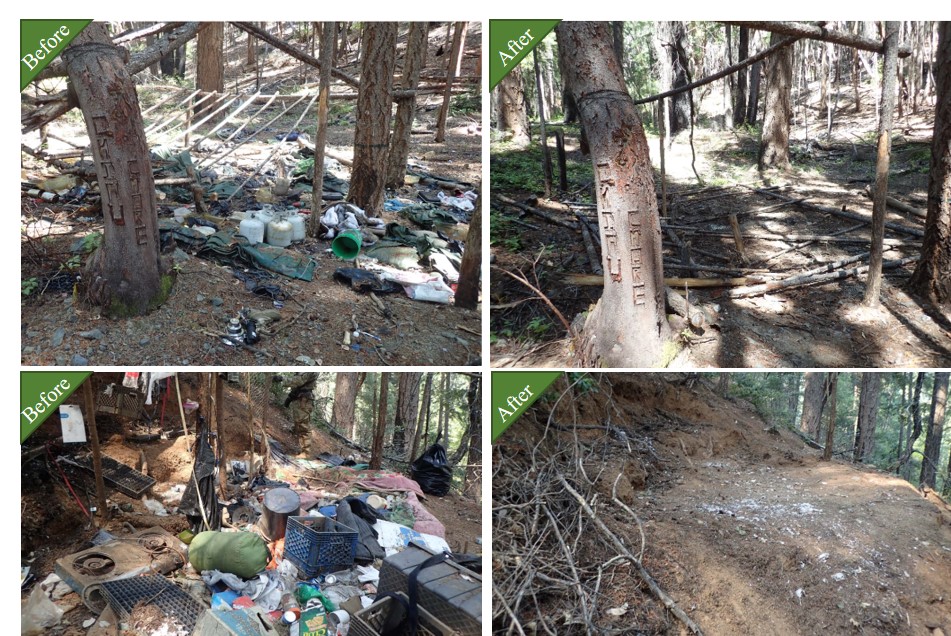Project Goals
The purpose was to restore habitats and protect aquatic, riparian and other at-risk species; prevent the movement of contaminants into the watershed; and minimize the risk to fish, wildlife, and human exposure to toxic materials.
Specific objectives of the project were to document and remove all non-hazardous refuse; identify hazardous material and mark for addressment by hazardous material specialists; remove all food items, cookware, and other attractants; remove all water diversions, reservoirs and other associated infrastructure; and develop site specific restoration plans for 170 cannabis cultivation sites in the Klamath, Trinity, and Salmon River watersheds. The project served as a conduit for training and building the capacity of qualified groups to assist further natural resource agencies addressing environmental impacts in the future.
Project Accomplishments and Ecosystem Outcomes
The project documented and removed all non-hazardous refuse and infrastructure that was posing an immediate environmental threat to watersheds on public lands. The project resulted in the removal of 97% of all refuse and infrastructure at the target illegal cannabis cultivation operations. The restoration included the removal of 148,203 pounds of refuse, including 727,736 feet of black polyethylene irrigation pipe. Additionally, illegal reservoirs were found and removed, and ranged in storage capacity from 100 to over 30,000 gallons. Evidence of pesticides and fertilizers were found at nearly every site. Approximately, 1,050 and 83,444 pounds of concentrated pesticides and fertilizer were removed, respectively.
The project involved efforts to increase stakeholder awareness at the local, state, and national levels, and was a productive step in addressing the associated impacts with trespass cannabis operations. Between April 1, 2018 and February 13, 2020, IERC delivered 56 presentation to interested stakeholders and was referenced or the topic of 68 local, nation, and international media articles.
 Pre- (top and bottom left) and post- (top and bottom right) reclamation photos of a camp at a trespass grow. The images are representation of a 97% refuse removal. Photos courtesy of the Watershed Restoration Grant Program and Integral Ecology Research Center.
Pre- (top and bottom left) and post- (top and bottom right) reclamation photos of a camp at a trespass grow. The images are representation of a 97% refuse removal. Photos courtesy of the Watershed Restoration Grant Program and Integral Ecology Research Center.